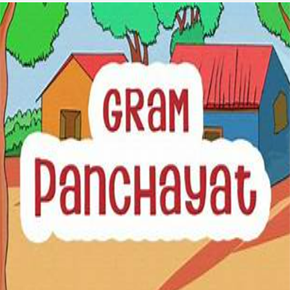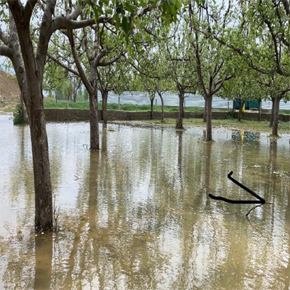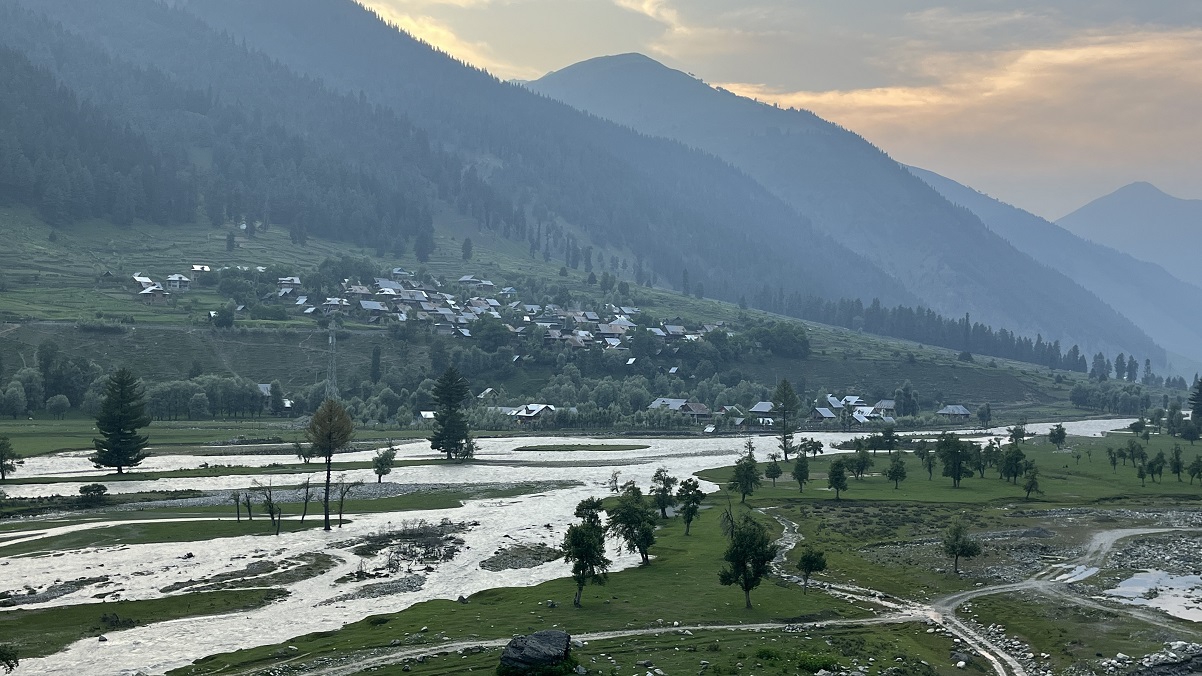Why uproot fruit trees around Ring Road?
''Government could have transplanted these trees by consulting experts''
Horticulture is the backbone of Kashmir’s economy. Around 80% of apples produced in India come from Kashmir. Commercial apple farming and its value chain is one of the mainstays of Kashmir’s rural economy, with an estimated revenue of around Rs.1500 crores. Govt estimates say that around 10 to 11 Metric Ton (MT) of apple is produced per hectare in Kashmir, while this is 40 MT per hectare in European countries, like France and Italy. The South American nation Chile, which is 10th largest apple producing country in the world, has better ranks than Italy, France, Russia, when it comes to the yield. The Chile per hectare yield of apples is 50 MTs. To enhance the apple yield in Kashmir, we need more apple plantations which need more land, but the agricultural landholding has come down drastically in Kashmir in the last 20 to 30 years.
As per the 2015-2016 Agriculture census, the average operational landholding has come down further. In the 2010-11 census, 46% of farmers in J&K were marginal farmers and this had further increased to 47.5% in 2015-16. The official data of J&K Revenue Department says that out of 24.16 lakh hectare of land available in J&K, just over nine lakh hectare is the net sown area, which means 37% of the total area of the UT of J&K. In addition, 6.58 lakh hectare area of J&K is under forest cover, which is 27% of the total land area. The agricultural land which includes the land under apple, pear, plum cultivation as well is constantly being converted for non farm activities like construction of highways and railways in a small place like Kashmir.
Supreme Court’s intervention
Last year a seven-member expert committee was set up by the Supreme Court to assess the value of trees cut for development projects on non-forest land. The court acted on a PIL filed by an NGO namely Association for Protection of Democratic Rights which was against felling of 400 non-fruit bearing trees around Kolkata where the Govt was executing a Road over Bridges (ROB) project.
Dr. MK Ranjitsinh Jhala, wildlife expert and former Chairman of the Wildlife Trust of India headed this committee (chairman). The other members included Jigmet Takpa, Joint Secretary, Ministry of Environment, Forests and Climate Change - (Member Secretary), Arun Singh Rawat, DG, Indian Council for Forestry Research, Prof. Sandeep Tambe, (Indian Forest Service), currently working as Professor of Forestry at the Indian Institute of Forest Management, Bhopal, Gopal Singh Rawat, former Dean and Director, Wildlife Institute of India, Dr. Nilanjan Ghosh, Director, Observer Research Foundation, Kolkata and Pradeep Krishen, Environmentalist.
The committee recommended setting up a tree conservation authority in every state and at local level as well (in districts etc). The authority will be overseeing compensatory afforestation and to act as custodians of public-owned trees on non-forest land (PTNFL). The committee submitted 184-page report to the Supreme Court early this year wherein it has recommended a large-scale national research project to conduct a species-specific tree ecosystem service valuation to arrive at their Net Present Value (NPV), considering the same as functions of age, girth-at-breast height, etc.
“When you cut a heritage tree, imagine the value of the oxygen the tree produced all these years. Compare it to how much you would have to pay for the equivalent amount of oxygen tree produced if you have to buy it from somewhere else,” said the then Chief Justice of India S.A. Bobde who was heading a three-judge bench that had constituted the 7 member committee. Two other judges included Justice B.R.Gavai and Justice Surya Kant.
Transplanting Chinars
The iconic Rup Lank, also called Char Chinar, an Island located in the middle of the Dal Lake, was restored with the transplantation of two grown-up Chinar trees. Acting upon the directions of Lt Governor and instructions of Chief Secretary, J&K, Forest Department formulated a strategy in October, 2021 in consultation with technical experts of Floriculture Department, Lake Conservation and Management Authority-LCMA and the scientists of SKUAST and J&K Forest Research Institute -JKFRI, for restoration of Rup Lank also known as Char Chinar island. This island which is said to have been constructed by Murad Baksh, brother of Mughal ruler Aurangzeb was looking shabby as two old chinar trees had dried up.
According to an official statement of the Forest Department, two grown up Chinars were removed under the technical guidance of experts from Foreshore Road, Srinagar, where they were said to be under stressful conditions. These Chinars were excavated along with roots & ball of earth, and then lifted by using a long hydraulic crane. The transplants were then transported to the Rup Lank island on a huge pontoon which was connected to a motorised boat. This distinctive operation was executed between 19th to 22nd February this year. The two Chinars were finally planted at Rup Lank. I have been told by my reliable sources that both these Chinars are growing well at the new site, Rup Lank-Char Chinar Island. I congratulate the Forest Department, SKUAST Srinagar, LCMA and Floriculture Department for this wonderful work.
During the last 10 years a large number of apple trees and other fruit trees have been axed and uprooted during execution of various developmental projects in Kashmir valley, like road widening or construction of new road projects, and highways. Unfortunately not even a single tree could be protected and preserved using transplantation technology inspite of the fact that we have the best horticulture institutions and Krishi Vigyan Kendra’s operational in every district?
Uprooting fruit trees by NHAI
The National Highway Authority of India (NHAI) along with NKC Projects Ltd, that is executing the work on 62 km long Srinagar Semi Ring Road project have uprooted and axed thousands of apple, plum, pear and peach trees; these came within the alignment of this road in Budgam and Srinagar districts in last 6 months. JCBs & hydraulic cranes were recently pressed into service in Wathoora Budgam to uproot plum and apple trees. The affected orchardists were not even given advance notice. They could have been given options to transplant the trees, especially smaller fruit trees. Had our district administration been really farmer friendly they would have consulted KVKs, horticulture department, or SKUAST scientists to explore these possibilities. The farmers have even not been compensated fully as the assessment for fruit had been made as per 28 year old rates (Rs 16 / Kg for apple and Rs 13 / Kg for plum) which is 6 to 7 times less than the present market value. In case of land the awards have lapsed already due to efflux of time. The majority of land owners have not been compensated at all as they went into litigations. The High Court recently issued an order saying construction work should not stop and the same was misinterpreted by NHAI, NKC Pvt Ltd and local administration of Budgam. They could have continued the work in such areas where they had completed the land acquisition process and had paid the compensation to affected people. Instead they chose to trespass into such landed estates which don’t even belong to them. The standing crops like mustard, oats and vegetables were destroyed. Incidentally this season we had a bumper crop of mustard and the Govt could have waited for a month or so when the same could have been harvested. How can NHAI, construction company NKC Pvt Ltd, Revenue Officers like Naib Tehsildar Chadoora, Tehsildar Chadoora, Collector land acquisition Budgam and above all Deputy Commissioner Budgam justify these criminal acts? One can understand JCB’s damaging mustard or oats of those land owners who have received some part of the compensation, but why was standing crop of those landowners like Gulzar Ahmad Akhoon, Ghulam Mohammad Dar, Ghulam Nabi Bhat also damaged; they have received nothing and their awards have got lapsed which has been authenticated by High Court of J&K in its several pronouncements. In one of its interim orders Ab Salam Bhat v/s Govt of J&K, the J&K High Court on 9.11.2020 ordered for maintenance of status-quo and issuance of fresh notification under central law which is applicable with effect from Oct 31st 2019. The division bench of Chief Justice in Bashir Ahmad Bhat v/s Govt of J&K called fruit reassessment petition “premature” as the court said awards for the land had lapsed and when the fresh awards were passed the fruit assessment could be taken up. NHAI, District Administration Budgam and NKC Pvt Ltd didn’t bother to even go through that order when the same was read by this author before NHAI’s lady engineer and Naib Tehsildar Chadoora on March 30th 2022 at Wathoora just before an hour when the uprooting of fruit trees began. I was given assurance by them and the collector as well, but after I left they uprooted the fruit trees, depriving the owners from transplanting the same using modern techniques.
NGT’s 2017 order
The National Green Tribunal in the case of T.N. Godavarman Thirumalpad Vs. Union of India & others has said that persons felling or cutting trees in forest or non forest area or even on private land are supposed to plant 10 trees for each tree cut or felled. The order of the Principal bench of NGT headed by Justice Swatenter Kumar dated March 14th 2017 reads:
“All the persons felling, cutting the trees in the Forest area or even on the private land are hereby prohibited from cutting the trees unless and until they plant before cutting, 10 trees for each tree cut or felled from and/or proposed to be felled or cut”
Will NHAI or NKC Pvt Ltd or DC Budgam plant 10 trees against one felled apple or plum tree in Wathoora or Gudsathoo? We won’t remain silent and will seek this order to be implemented in letter and spirit. Further the agency felling the trees was directed by NGT to deposit sufficient money with the Govt to ensure that the trees are duly cared for and due protection was provided to them for a period of 5 years from the day of planting.
Conclusion
The Supreme Court committee has suggested that while valuing trees using the transplantation-cost method, a user agency would bear the cost of transplanting trees including pre-conditioning, hardening, rootstock consolidation, refuge site preparation, transportation, and transplanting at a refuge site. Why didn’t the Govt explore such a plan for the affected apple and plum growers of Wathoora, Gudsathoo, Rambir Grah or other areas where thousands of fruit trees have been uprooted? Why didn’t the Govt give a prior notice to the farmers of Wathoora? If huge chinars could be excavated from Foreshore Road, Nishat Srinagar, and then transplanted with success at Char Chinar island in Dal Lake, why hasn’t the Govt explored similar action when it comes to saving and protecting our apple or other fruit trees? I appeal LG Manoj Sinha to take this issue seriously and take the officers of District Administration Budgam and NHAI to task. I also appeal to the judiciary to intervene and save Kashmir’s trees, especially our fruit trees which are the major source of our economy. Let us stop bringing destruction under the garb of development....

























































































